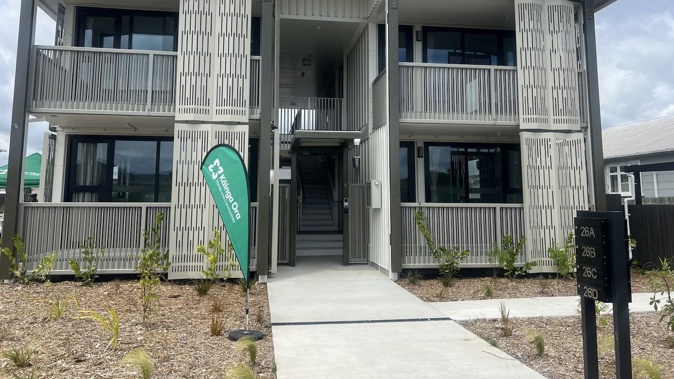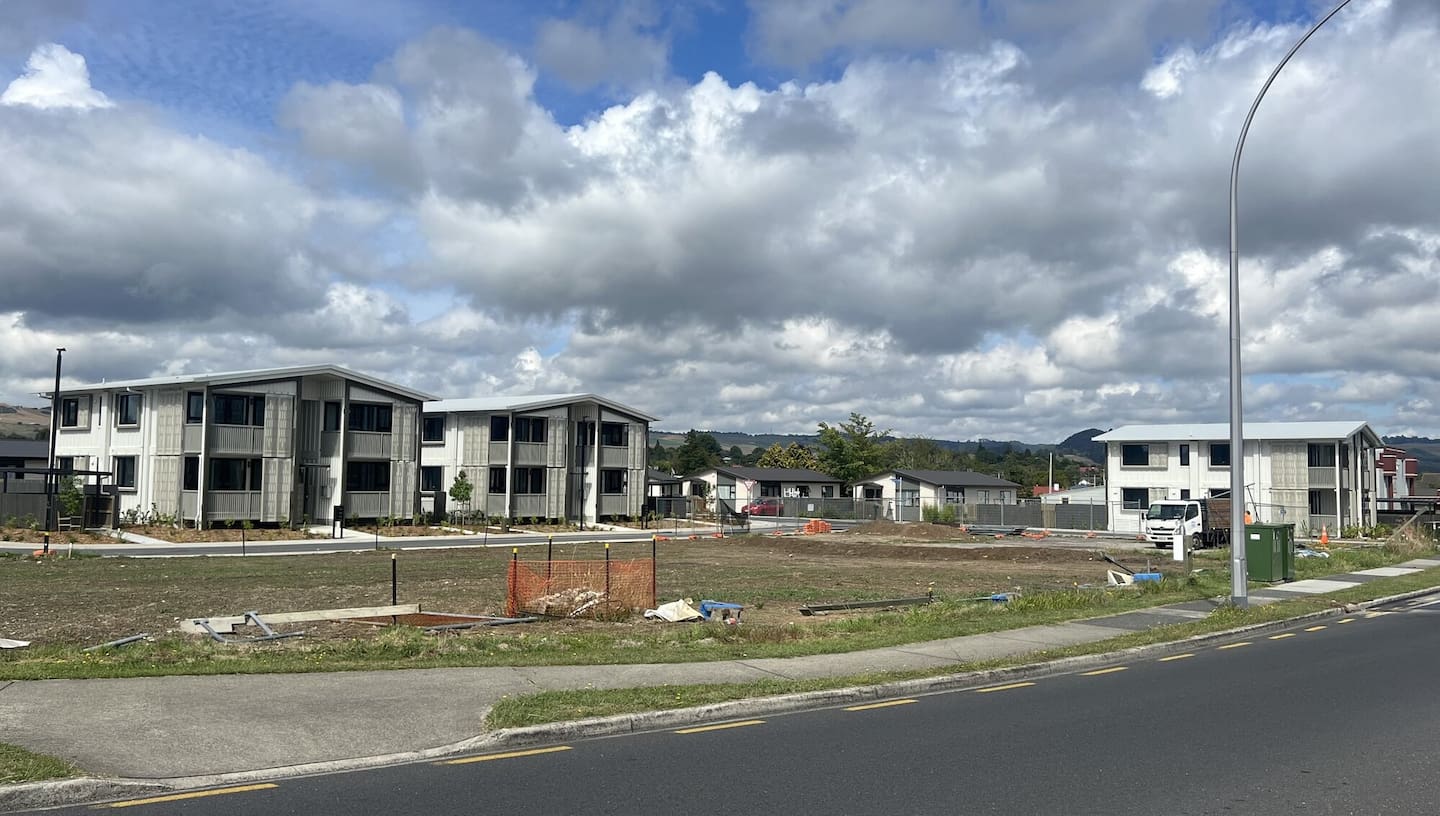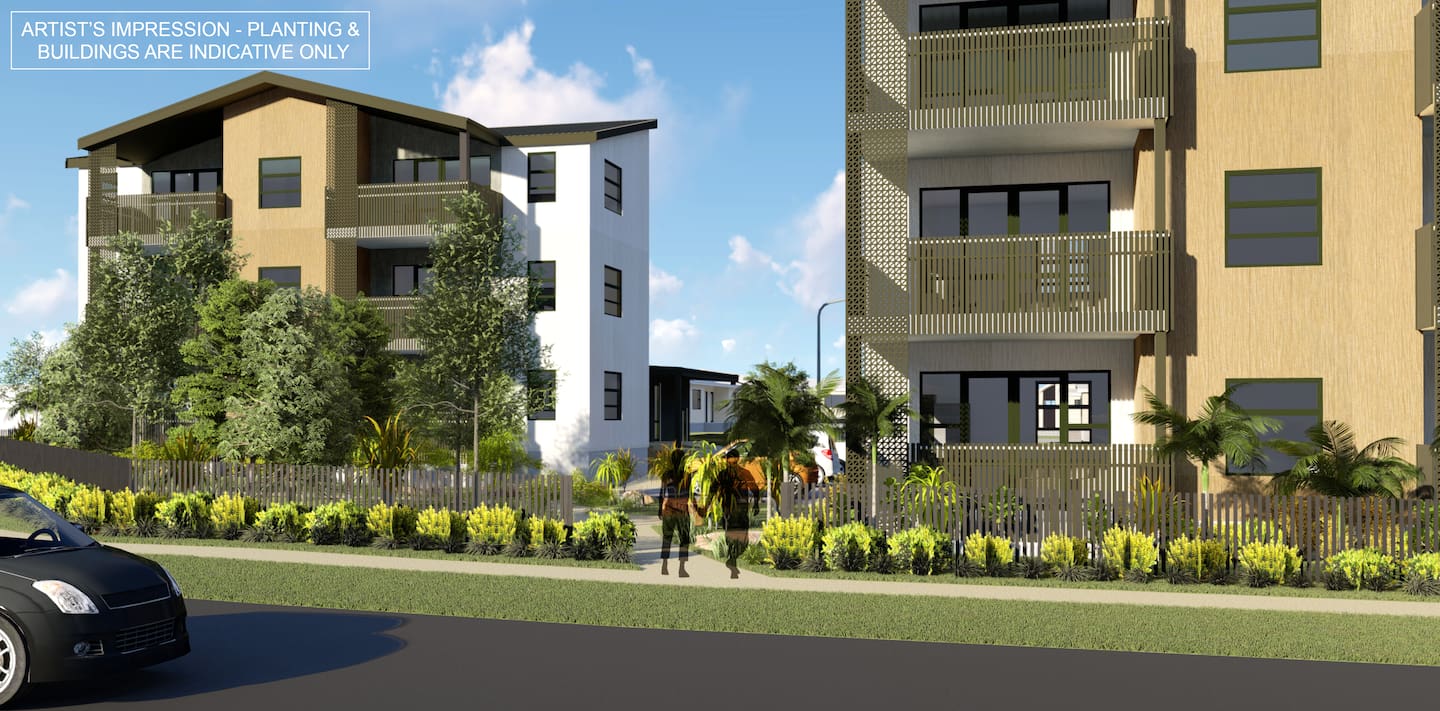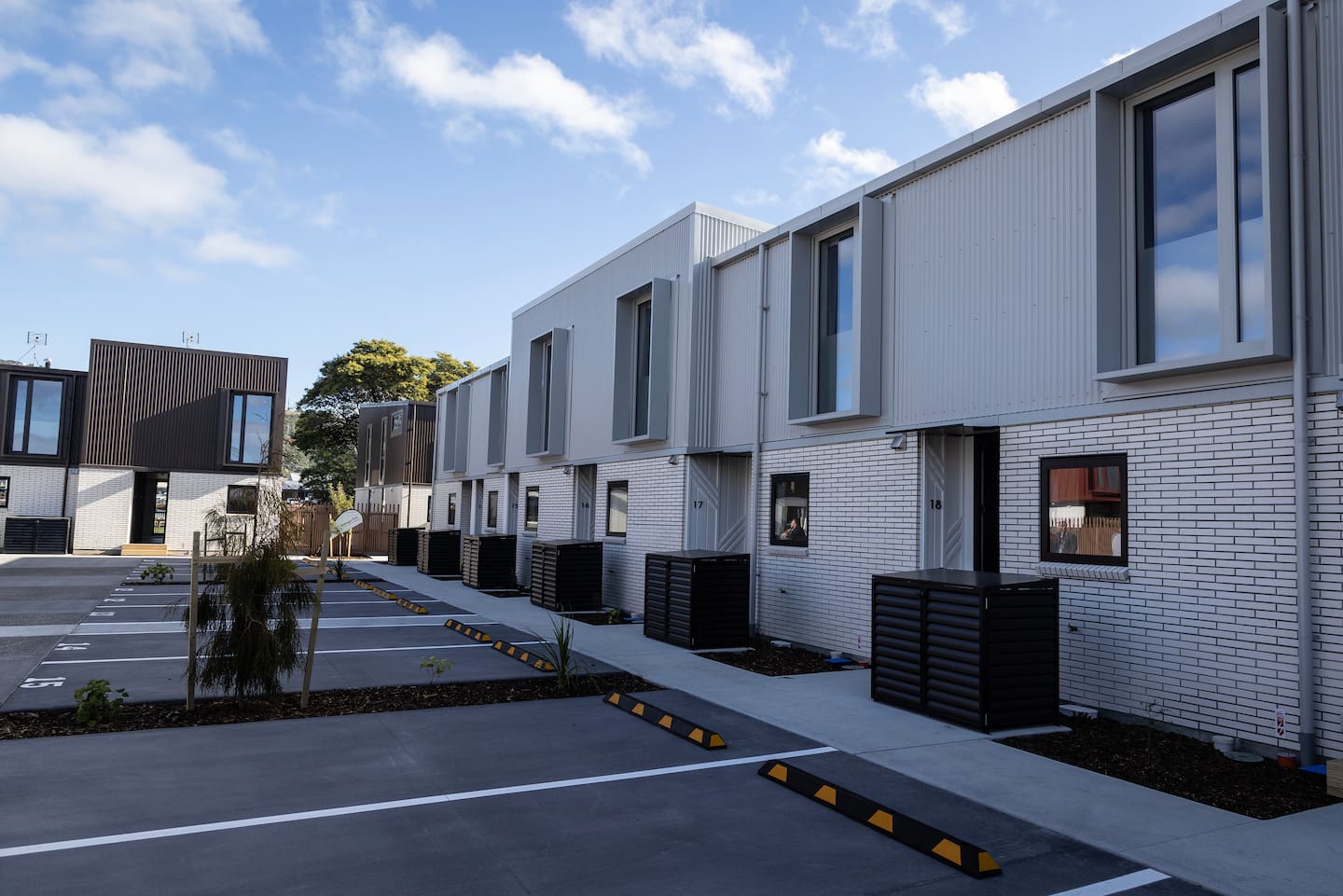
Twelve one-bedroom Kāinga Ora apartments in Rotorua – originally described by some as being like “container homes” – cost more than $630,000 each to build and are still awaiting official consent sign-off before tenants can move in.
The total build cost of the three two-storey blocks, each with four apartments, on the corner of Malfroy Rd and Ranolf St was $7.6 million – a cost Kāinga Ora now admits wouldn’t be approved under the new Government.
 The 12 one-bedroom "container" homes on the corner of Malfroy Rd and Ranolf St cost more than $630,000 each to build. Photo / Kelly Makiha
The 12 one-bedroom "container" homes on the corner of Malfroy Rd and Ranolf St cost more than $630,000 each to build. Photo / Kelly Makiha
Rotorua developer Tony Bradley, who has recently completed two housing projects for Kāinga Ora, responded with “Oh my God” when told of the cost to build the Ranolf St and Malfroy Rd apartments. He said his homes were cheaper and, in his opinion, of better quality.
Kāinga Ora Bay of Plenty regional director Darren Toy said the cost reflected the purchase price of the off-site manufactured units – including all transportation costs, infrastructure and foundations work and on-site construction work.
Toy said other recently completed one-bedroom units throughout the country ranged from $325,000 to $520,000 each to build. The costs didn’t include the cost to buy the land.
“While the development met the financial metrics at the time it was approved to proceed, a similar social housing development would not proceed at that cost today and we are delivering similar one-bedroom homes at lower costs than this development.”
 The units after they were put on the site in April 2024. Photo / Andrew Warner
The units after they were put on the site in April 2024. Photo / Andrew Warner
The shells of the homes were dropped on to the site in April last year. The builds took nine months to finish. They were blessed by local Māori at the end of January at a public drop-in session, when it was said tenants would begin to move in in February.
Toy said Kāinga Ora was still waiting on the Code Compliance Certificate (CCC).
Toy said the CCC was expected to come through within the next week.
He said staff had already worked to identify suitable new tenants who would move in once they had signed their tenancy agreements and sorted furniture and appliances.
“It may be some move in late February but it’s more likely to be March for most of them.”
Toy said the units were part of an initiative to increase off-site manufacturing as a construction method – an initiative under the previous Labour Government.
“The units were purchased at a time when the capacity of the New Zealand market could not deliver to our public housing construction plans so we worked with New Zealand-based suppliers with established offshore manufacturing facilities. The units were manufactured overseas and shipped to New Zealand. That took time.”
Toy said Kāinga Ora now operated under a new housing delivery system that was planning and building good-quality homes faster, more reliably and at a lower cost.
“This shift is part of our focus on delivering the Government’s housing expectations in the most efficient way possible.”
The changes come after a review of Kāinga Ora led by Sir Bill English showed the agency was underperforming and not financially viable.
Toy said Kāinga Ora was in the process of looking at its social housing delivery plans and reassessing some projects for best value for money, including the use of off-site manufacturing as a method of construction.
There are now 10 proposed Rotorua projects totalling 64 houses “under assessment” by the Government.
 What proposed three-storey Kāinga Ora apartments on the corner of Ranolf St and Malfroy Rd will look like. Photo / Supplied
What proposed three-storey Kāinga Ora apartments on the corner of Ranolf St and Malfroy Rd will look like. Photo / Supplied
Among those builds being reviewed was what was to be Rotorua’s first three-storey apartment block of 24 homes, which would have been the final stage of the Ranolf St and Malfroy Rd development.
The plans have resource consent but Toy said the final go-ahead was still under assessment.
Fencing around the empty block of land at the front of the Ranolf St and Malfroy Rd development where the three-storey apartments were to go has come down in the past week.
Toy said there were 27 Kāinga Ora redevelopment sites under way in Rotorua being constructed through its Housing Delivery System. He said that system was a building method that aimed to bring costs down through a more standardised, simplified and systematic approach to design, planning and construction.
“The rigour being applied to these builds will see these houses built more cost-effectively and quicker than in the past.”
 Tony Bradley's homes on Lake Rd. Photo / Andrew Warner
Tony Bradley's homes on Lake Rd. Photo / Andrew Warner
Bradley said he was shocked at the price of the apartments.
“The whole reason to use container-type homes is for speed and to keep the costs down but that doesn’t prove that really.”
Bradley was contracted by Kāinga Ora to do two recent developments in Rotorua, one on Lake Rd and one on Fairy Springs Rd. He said the cost was about $4000 per square metre to build and the average size of his two- and three-bedroom homes was about 100sq m. This meant the build cost was about $400,000 each.
Bradley said his homes were “4″ Green Star-rated, which meant they were rated “best practice” in terms of housing sustainability, and both sites – totalling 35 homes – took about a year and a half to finish.
“I definitely build mine cheaper than that ... They were constructed locally using Bay of Plenty tradies and turned over quicker.”
Kelly Makiha is a senior journalist who has reported for the Rotorua Daily Post for more than 25 years, covering mainly police, court, human interest and social issues.
Take your Radio, Podcasts and Music with you









